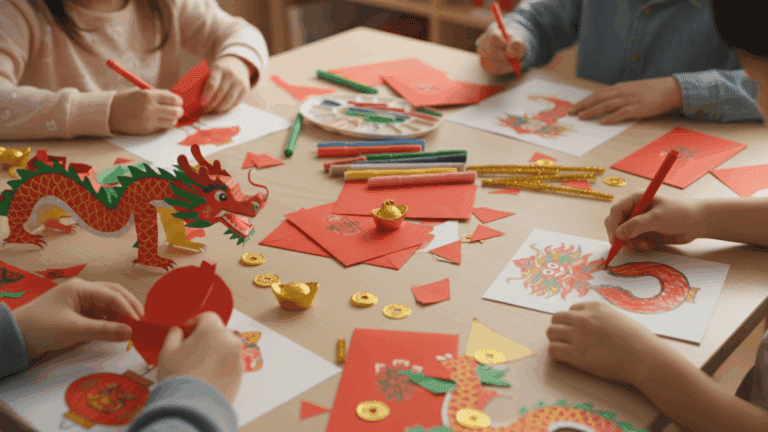Every teacher has been there, watching a bright student stumble over simple words like “said” and “was” for the hundredth time.
Teaching high-frequency words can feel like an uphill battle. These tricky little words appear everywhere, yet students continue to forget them. Traditional flashcards aren’t cutting it, and teachers need better strategies that stick.
Learning how to teach high-frequency words doesn’t have to be complicated. With the right approach, teachers can turn their struggling readers into confident word masters.
This shares proven methods that work in real classrooms with real kids, no fancy tricks, just solid techniques that deliver results.
What Are High-Frequency Words?
High-Frequency Words (HFWs) are the most commonly occurring words in written text, making up 50-75% of all reading material. Examples include the, and, to, was, said, you, they, have, from, one, could, and people.
Students struggle because many HFWs have irregular spelling patterns that don’t follow phonics rules (such as “said,” “was,” and “come”), making them difficult to decode. They often lack meaningful context clues.
Automatic recognition of HFWs is crucial for reading fluency and comprehension. When students instantly recognize these words, they can focus on understanding their meaning rather than decoding them.
Two Types:
- Sight words: Must be memorized (irregular spellings like “was,” “said”)
- Decodable HFWs: Can be sounded out but need practice for automaticity (“and,” “him”)
Examples of High-Frequency Words

These are commonly occurring words in texts that students must recognize instantly, forming the foundation for effective strategies to teach high-frequency words.
Kindergarten – Early High-Frequency Words (Dolch & Fry)
These are the simplest and most frequently used words that early readers must instantly recognize to begin reading basic sentences.
-
a
-
the
-
I
-
is
-
in
-
to
-
you
-
it
-
we
-
and
Grade 1 – Common High-Frequency Words
These words support young readers as they develop the ability to form complete sentences and read short stories with fluency and comprehension.
-
went
-
come
-
here
-
my
-
they
-
where
-
me
-
are
-
look
-
she
Grade 2 – Developing Readers
These words support the development of growing fluency and comprehension as students transition to more complex texts and independent reading.
-
because
-
before
-
could
-
again
-
know
-
every
-
would
-
there
-
first
-
thought
Irregular or “Tricky” High-Frequency Words (Heart Words)
These words often defy typical phonics patterns and are best taught using “heart word” strategies.
-
said
-
does
-
was
-
have
-
some
-
give
-
what
-
been
-
one
-
who
Teaching Approaches and Methods

Explore proven strategies on how to teach high-frequency words effectively through structured, research-backed methods:
Science of Reading-Aligned Approach
Connects sounds to letters through phoneme-grapheme mapping using David Kilpatrick’s orthographic mapping research.
Students store words in long-term memory by linking spelling patterns to pronunciation through spaced repetition and retrieval practice.
Multisensory Instruction
Based on Orton-Gillingham principles, engaging sight, sound, and touch simultaneously. Uses sand trays, skywriting, and color-coded letters to accommodate different learning styles through visual, auditory, and kinesthetic activities.
The Heart Word Method
Students identify which word parts require memorization and which can be decoded through analysis. They locate the “heart part” (irregular section) while sounding out regular parts, understanding that only irregular portions require sight word memorization.
Games & Technology Integration
Interactive tools like Quizlet and Boom Cards provide engaging practice with immediate feedback.
Traditional games, such as word hunts, bingo, and word ladders, provide fun and repeated exposure while enhancing motivation across different learning preferences.
Two Complete Teaching Modules
Step-by-step, classroom-ready strategies for teaching high-frequency words using phonics and multisensory methods.
| Feature | Module 1: See It, Map It, Write It (Phonics-Based) | Module 2: Sight Word Station Rotation (Multisensory) |
|---|---|---|
| Grades | K–2 | 1–3 |
| Goal | Decoding, mapping, and spelling of high-frequency words | Fluency via multisensory and contextual repetition |
| Approach | Phoneme-grapheme mapping, heart word method | Station-based practice with sensory and visual supports |
| Time | 20–30 mins per lesson | 4 stations: 15–20 mins each or 1 station/day across a week |
| Assessment | Dictation, exit ticket, observations | Flashcard review, written sentences |
| Differentiation | Tailored word lists, simpler visuals, adjusted complexity | Peer support, tech tools, leveled tasks |
| Best For | Systematic phonics, decoding support | Active learners who benefit from multisensory repetition |
Steps For Module 1: Phonics-Based Approach
Objectives: Decode & encode HFWs, map sounds to spellings, and use words in context.
Materials Required: Word list, sound boxes, letter tiles, dry-erase boards.
A structured method for teaching high-frequency words using phoneme-grapheme mapping and heart word strategies.
Step 1: Introduce the Word.
Display the high-frequency word in context by incorporating it into a sentence or text. Discuss its meaning and correct pronunciation to ensure student understanding.
Step 2: Phoneme-Grapheme Mapping
Use Elkonin sound boxes to map each sound in the word. Match letters to sounds and highlight any irregular or tricky spelling patterns that don’t follow typical phonics rules.
Step 3: “Heart” Word Highlight.
Draw a heart symbol over irregular letters or letter combinations. Explain to students that these parts “we have to learn by heart” because they can’t be sounded out.
Step 4: Write & Say
Students write the word 3-5 times while spelling it aloud. Incorporate multisensory strategies, such as skywriting in the air or writing in sand trays, to reinforce learning.
Step 5: Apply in Context
Have students create or read sentences containing the word. Practice identifying the target word within short passages to build recognition skills.
Steps For Module 2: Multisensory Centers
Objectives: Read, spell, and write HFWs; apply to language tasks.
Materials Required: Word cards, sensory trays (sand/dough), and sentence strips.
A structured method for teaching high-frequency words using the Multisensory Center.
Set up 4 stations with small groups rotating through each:
Station 1: Build It!
Students construct words using magnetic letters, clay, or playdough while spelling and saying the word aloud for tactile reinforcement.
Station 2: Find It!
Conduct word hunts in passages or books. Students highlight or underline the target word to practice visual recognition in context.
Station 3: Write It!
Use rainbow writing techniques or write the word 3 times in different styles. Students also write complete sentences using the target word.
Station 4: Use It!
Create mini-stories, drawings, or skits incorporating 2-3 high-frequency words. Students share their work with the group or record it for teacher feedback.
Tips for Success
These essential strategies will help maximize student learning and retention of high-frequency words.
- Start with Assessment – Assess students’ current word knowledge before instruction to target teaching effectively.
- Practice Daily but Keep it Short – Dedicate 10-15 minutes daily rather than long, infrequent practice sessions.
- Focus on a Few Words at a Time – Introduce 3-5 new words per week to avoid overwhelming students.
- Use Real Reading Contexts – Practice words within meaningful sentences and texts, not in isolation.
- Track Progress and Celebrate Growth – Monitor student progress and celebrate milestones to maintain motivation.
Bottom Line
Unlock reading success! Learning how to teach high-frequency words transforms struggling readers into confident learners.
Master the winning combination: heart word method, phoneme-grapheme mapping, and multisensory magic.
Just 15 minutes a day, with 3-5 words using spaced repetition, creates reading breakthroughs. From assessment to celebration, this proven approach works!
What’s your biggest high-frequency word teaching win? Share your story!


















